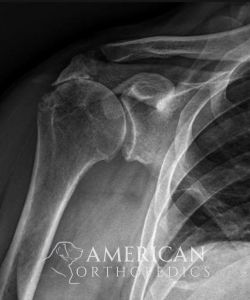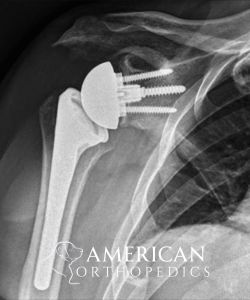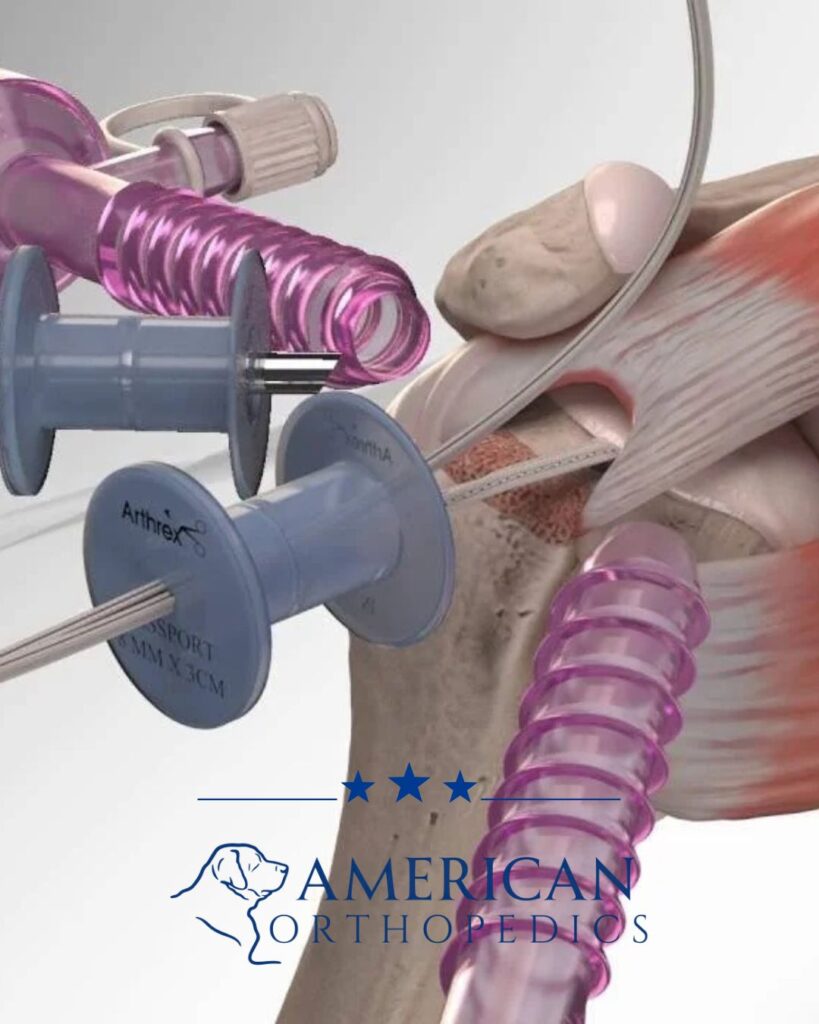Minimally Invasive
Rotator Cuff REpair
Dr. Ratner is an expert at Minimally Invasive Rotator Cuff Repair using Advanced Surgical Techniques.
Rotator Cuff Repair
with Dr. Drew Ratner
Rotator cuff repair is a surgical procedure used to fix a torn tendon in the shoulder, often caused by injury, repetitive use, or age-related degeneration.
At American Orthopedics, Dr. Drew Ratner performs this procedure using an advanced, minimally invasive arthroscopic technique. A tiny camera (arthroscope) and specialized instruments are inserted through small incisions, allowing precise repair of the torn tendon with minimal disruption to surrounding tissue.
This modern approach reduces pain, speeds up healing, and leaves smaller scars compared to traditional open surgery.
"Rotator cuff injuries can be frustrating and limiting—but they don’t have to be permanent. With minimally invasive repair, I’m able to restore strength and range of motion while minimizing pain and downtime."
- Dr. Drew Ratner, MD, Board-Certified Orthopedic Surgeon
Actual patient experience.
Actual patient experience.
Reverse Total Shoulder for Rotator Cuff Arthropathyw
Patient of Dr. Ratner.
Before

After

Why Patients Choose Dr. Ratner
The region’s most preferred orthopedic surgeon
When it comes to arthroscopic rotator cuff repair, your choice of surgeon makes all the difference. At American Orthopedics, you’re not just a number—you’re an individual receiving expert, personalized care from Dr. Ratner, a highly skilled and compassionate provider.
Shoulder injuries require more than just technical skill—they require personalized care from a surgeon who understands the demands of daily movement and athletic performance. Dr. Ratner’s expertise, combined with a patient-first approach, makes him a trusted choice for shoulder surgery in Greenville and beyond.




1. Fellowship-Trained Sports Medicine Surgeon
Dr. Ratner trained at one of the nation’s top sports medicine fellowships, giving him advanced experience in treating shoulder injuries with arthroscopic techniques.
2. Consistent, Personalized Care
Patients see Dr. Ratner at every stage—from diagnosis to surgery to follow-up. No handoffs, no confusion—just direct, one-on-one care.
3. Modern Tools, Boutique Experience
With access to advanced surgical tools, mobile-friendly scheduling, and minimal wait times, patients receive expert care in a warm, welcoming environment.
How the procedure works.
During arthroscopic rotator cuff repair, Dr. Ratner makes a few small incisions around the shoulder to insert the arthroscope and instruments. The camera projects a magnified view of the inside of the shoulder joint onto a monitor, giving Dr. Ratner a detailed view of the damage.
He then uses specialized tools to clean the area and reattach the torn tendon to the bone using sutures and small anchors. The minimally invasive technique protects surrounding muscles, reduces bleeding, and leads to faster recovery.

Who Is a Candidate?
You may be a candidate for rotator cuff repair if:
- You have a confirmed rotator cuff tear via MRI or ultrasound
- You experience shoulder pain, weakness, limited range of motion, or pain with sleeping
- Conservative treatments like rest, physical therapy, or injections have failed
- You wish to sleep better or return to sports, work, or active living without pain or limitations
Whether your injury is from athletics, work, or everyday life, Dr. Ratner will evaluate your specific condition and guide you toward the best treatment path.
Benefits of Arthroscopic Repair
There are many advantages to choosing the arthroscopic approach over traditional open surgery, including:
- Minimally Invasive Technique: Small incisions reduce tissue trauma, minimize pain, and result in less scarring.
- Faster Recovery: The muscle-sparing technique helps speed up healing so patients can return to activity sooner.
- Lower Risk of Infection: Smaller incisions mean fewer opportunities for post-surgical complications.
- Improved Surgical Precision: The arthroscope provides a magnified, detailed view of the joint for more accurate repairs.
- Reduced Blood Loss: Minimally invasive tools limit bleeding during surgery.
- Preserved Muscle Strength: By avoiding major muscle disruption, shoulder strength and function are better maintained.
- Decreased Need for Pain Medication: Many patients require fewer narcotics due to reduced post-op pain.
What to Expect
Experience advanced care at American Orthopedics.
1. Your consultation
At your initial visit, Dr. Ratner will take time to listen to your symptoms, examine your shoulder, and review imaging (or order new ones if needed). He’ll walk you through the anatomy of your injury, explain your surgical and non-surgical options, and answer your questions in detail.
If arthroscopic rotator cuff repair is recommended, you’ll leave with a clear understanding of the procedure and what to expect next.
2. The Procedure
Rotator cuff repair is performed in an outpatient surgical center under general anesthesia or a nerve block for pain control. After the small incisions are made and the arthroscope is inserted, Dr. Ratner cleans the area and reattaches the torn tendon to the bone using specialized sutures and tiny anchors. The procedure typically takes 30–45 minutes and is designed to be as gentle and precise as possible.
Most patients return home the same day with their arm in a sling and a customized recovery plan in hand.
3. After Surgery
- Immediately Post-Op: Your arm will be in a sling to protect the repair, and you'll begin gentle range-of-motion exercises as directed.
- Weeks 1–4: Pain and swelling decrease significantly. Most patients resume light daily activities with restrictions. Patients can return to driving as soon as they are confident with it.
- Weeks 4–8::Gradual strengthening begins with supervised therapy.
- 3 to 6 Months: Many patients regain near-full function and return to work, hobbies, and even sports depending on their level of activity.
Advanced care for maxium results & comfort
Rotator Cuff Repair Recovery Tips
Wear your sling
Wear your sling as instructed, especially while sleeping or moving around
Clean & Dry Incisions
Keep your surgical incisions clean and dry
Limit Movement
Avoid lifting, reaching, or pushing with the operative arm until cleared
Stay Active
Stay active with gentle walking to promote circulation and healing
Ask for Help
Ask for help with daily tasks during the first few weeks
With consistency and support, most patients achieve excellent outcomes and return to their active lifestyle.
FAQ
Q: How do I know if my rotator cuff is torn?
Q: Is surgery always necessary for a rotator cuff tear?
A: Not always. Small or partial tears may be treated with physical therapy, activity modification, and injections. Surgery is typically recommended for full-thickness tears or cases where conservative treatment fails.
Q: How long will I need to wear a sling after surgery?
A: Most patients wear a sling for 4–6 weeks to protect the repair and promote healing, but this can vary depending on the severity of the tear and surgical technique.
Q: When can I return to sports or heavy lifting?
A: While recovery varies, most patients can begin lifting and strengthening after 3 months and are usually fully healed to resume sports or strenuous activity between 4–6 months post-surgery. Dr. Ratner will guide your return based on your progress and goals.
